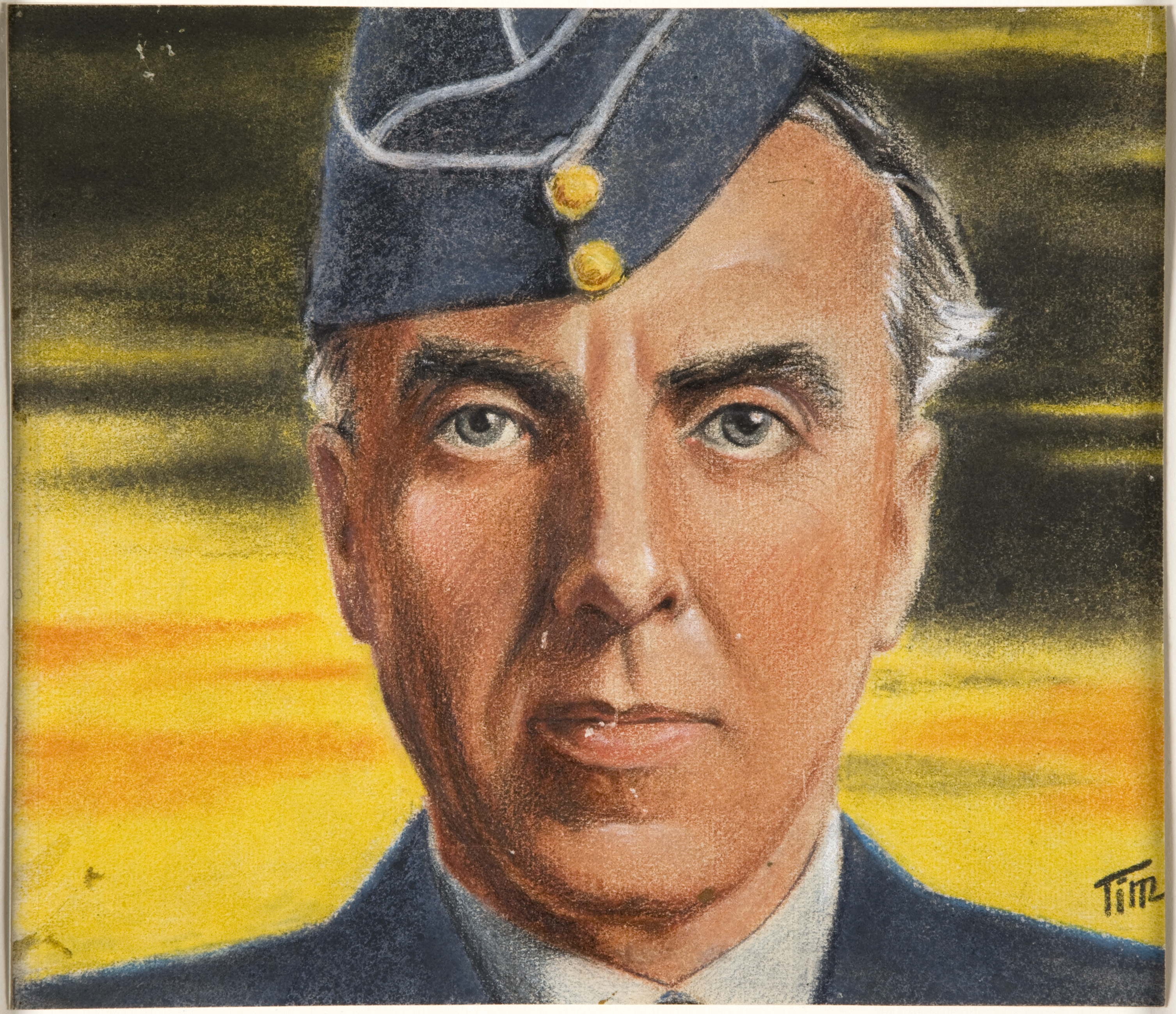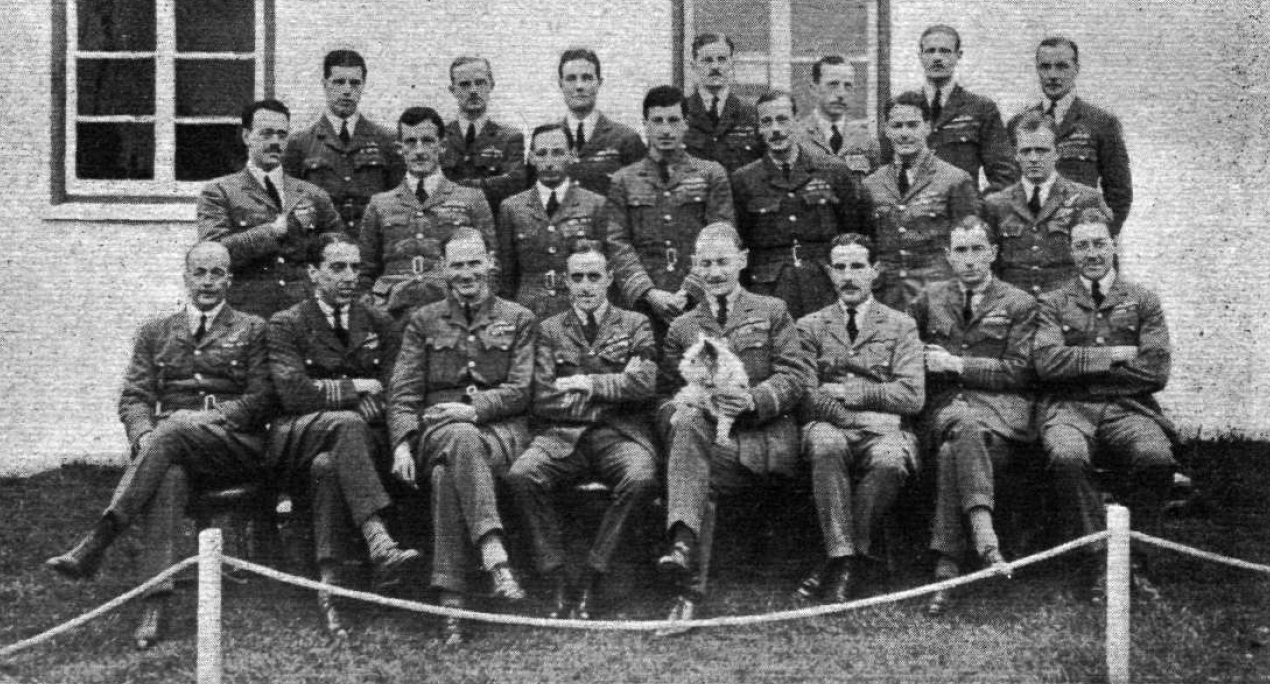|
Christopher Courtney
Air Chief Marshal Sir Christopher Lloyd Courtney, (27 June 1890 – 22 October 1976) was a senior Royal Air Force officer. RAF career Courtney joined the Royal Navy in May 1905 as a midshipman at Britannia Naval College. By late 1909 he was an acting sub-lieutenant on board . He fought in the First World War initially as Officer Commanding Killingholme Royal Naval Air Station. He continued his war service as Officer Commanding Royal Naval Air Station Dover, Officer Commanding No. 4 Wing RNAS and then Officer Commanding No. 7 Squadron RNAS. In April 1918, with the creation of the Royal Air Force, Courtney transferred from the Navy to the RAF and at that time he was appointed deputy director of Aircraft Equipment at the newly established Air Ministry. Just before the end of World War I, Courtney was promoted to acting brigadier-general and sent France to command the 11th Brigade which was being established as a subordinate formation of the RAF's Independent Air Force. However, ... [...More Info...] [...Related Items...] OR: [Wikipedia] [Google] [Baidu] |
King George VI
George VI (Albert Frederick Arthur George; 14 December 1895 – 6 February 1952) was King of the United Kingdom and the Dominions of the British Commonwealth from 11 December 1936 until his death in 1952. He was also the last Emperor of India from 1936 until the British Raj was dissolved in August 1947, and the first Head of the Commonwealth following the London Declaration of 1949. The future George VI was born in the reign of his great-grandmother Queen Victoria; he was named Albert at birth after his great-grandfather Albert, Prince Consort, and was known as "Bertie" to his family and close friends. His father ascended the throne as George V in 1910. As the second son of the king, Albert was not expected to inherit the throne. He spent his early life in the shadow of his elder brother, Prince Edward, the heir apparent. Albert attended naval college as a teenager and served in the Royal Navy and Royal Air Force during the First World War. In 1920, he was made Duke of Yo ... [...More Info...] [...Related Items...] OR: [Wikipedia] [Google] [Baidu] |
Legion Of Honour
The National Order of the Legion of Honour (french: Ordre national de la Légion d'honneur), formerly the Royal Order of the Legion of Honour ('), is the highest French order of merit, both military and civil. Established in 1802 by Napoleon, Napoleon Bonaparte, it has been retained (with occasional slight alterations) by all later French governments and regimes. The order's motto is ' ("Honour and Fatherland"); its Seat (legal entity), seat is the Palais de la Légion d'Honneur next to the Musée d'Orsay, on the left bank of the Seine in Paris. The order is divided into five degrees of increasing distinction: ' (Knight), ' (Officer), ' (Commander (order), Commander), ' (Grand Officer) and ' (Grand Cross). History Consulate During the French Revolution, all of the French Order of chivalry, orders of chivalry were abolished and replaced with Weapons of Honour. It was the wish of Napoleon, Napoleon Bonaparte, the French Consulate, First Consul, to create a reward to commend c ... [...More Info...] [...Related Items...] OR: [Wikipedia] [Google] [Baidu] |
Richard Peirse
Air Chief Marshal Sir Richard Edmund Charles Peirse, (30 September 1892 – 5 August 1970), served as a senior Royal Air Force commander. RAF career The son of Admiral Sir Richard Peirse and his wife Blanche Melville Wemyss-Whittaker, Richard Peirse was educated at the Junior School section of Monkton Combe School, Bath, Somerset, on and at King's College London. He became a midshipman in the Royal Navy Volunteer Reserve and was commissioned in 1912.Air of Authority – A History of RAF Organisation – Air Chief Marshal Sir Richard Peirse He was awarded the for his contribution ... [...More Info...] [...Related Items...] OR: [Wikipedia] [Google] [Baidu] |
Charles Burnett (RAF Officer)
Air Chief Marshal Sir Charles Stuart Burnett, (3 April 1882 – 9 April 1945) was a senior commander in the Royal Air Force during the first half of the 20th century. He was Air Officer Commanding Iraq Command during the early 1930s. During the Second World War, he served as Chief of the Air Staff of the Royal Australian Air Force. Early life Charles Burnett was born in Browns Valley, Minnesota, United States on 3 April 1882. He was the second son of John Alexander Burnett and Charlotte Susan Burnett. John Burnett was originally from the Scottish village of Kemnay in Aberdeenshire. Burnett was educated at Bedford School in England. His younger brother was Robert Burnett who was later knighted and rose to the rank of admiral. Early career In 1899, Burnett enlisted as a private in the Imperial Yeomanry in order to fight in the Second Boer War. Burnett claimed to be 18 when he was in fact only 17. He was discharged in 1901 in order that he might take a commission and he was ... [...More Info...] [...Related Items...] OR: [Wikipedia] [Google] [Baidu] |
Edgar Ludlow-Hewitt
Air Chief Marshal Sir Edgar Rainey Ludlow-Hewitt, (9 June 1886 – 15 August 1973) was a senior Royal Air Force commander. Early life He was the second son and the second of five children of the Rev. Thomas Arthur Ludlow-Hewitt (17 May 1850 - 16 June 1936) of Clancoole, Co. Cork and later vicar of Minety, Wiltshire and Edith Annie Hudson (9 March 1854 - 15 November 1944). First World War Educated at Eastman's School, Hammerton, Sir John ''ABC of the RAF'' London 1941 p.48 Radley College and Sandhurst, Ludlow-Hewitt was commissioned into the Royal Irish Rifles in 1905, but transferred to the Royal Flying Corps (RFC) before the First World War, where he qualified on 11 September 1914 for the Royal Aero Club's Aviator's Certificate no. 886. During the war he served first as a pilot in No. 1 Squadron Royal Flying Corps and then later as the Officer Commanding No. 15 Squadron and No. 3 Squadron on the Western Front. In 1916 Ludlow-Hewitt took up command of the 3rd (Corps) Wing ... [...More Info...] [...Related Items...] OR: [Wikipedia] [Google] [Baidu] |
RAF Staff College, Andover
The RAF Staff College at RAF Andover was the first Royal Air Force staff college to be established. Its role was the training of officers in the administrative, staff and policy aspects of air force matters. History Foundation Following the foundation of the RAF in April 1918 and the end of the First World War in November 1918, there was a determination to maintain the Air Force as an independent service rather than let the Army and Royal Navy control air operations again. Therefore, the creation of an RAF Staff College to parallel the Army Staff College and the Royal Naval Staff College was an important element in fully establishing the RAF. On 14 November 1921, Air Commodore Robert Brooke-Popham was tasked with setting up the RAF Staff College. On 1 April the following year, the new RAF Staff College came into being with Brooke-Popham as its first commandant. The Staff College was based at RAF Andover and was subordinate to Inland Area. The dog seen in the photograph on R ... [...More Info...] [...Related Items...] OR: [Wikipedia] [Google] [Baidu] |
Hugh Trenchard, 1st Viscount Trenchard
Marshal of the Royal Air Force Hugh Montague Trenchard, 1st Viscount Trenchard, (3 February 1873 – 10 February 1956) was a British officer who was instrumental in establishing the Royal Air Force. He has been described as the "Father of the Royal Air Force." During his formative years, Trenchard struggled academically, failing many examinations and only just succeeding in meeting the minimum standard for commissioned service in the British Army. As a young infantry officer, Trenchard served in India and with the outbreak of the Boer War, he volunteered for service in South Africa. While fighting the Boers, Trenchard was critically wounded and as a result of his injury, he lost a lung, was partially paralysed and returned to Great Britain. On medical advice, Trenchard travelled to Switzerland to recuperate and boredom saw him taking up bobsleighing. After a heavy crash, Trenchard found that his paralysis was gone and that he could walk unaided. Following further recuperation, ... [...More Info...] [...Related Items...] OR: [Wikipedia] [Google] [Baidu] |
Officer Commanding
The officer commanding (OC), also known as the officer in command or officer in charge (OiC), is the commander of a sub-unit or minor unit (smaller than battalion size), principally used in the United Kingdom and Commonwealth. In other countries, the term commanding officer is applied to commanders of minor as well as major units. Normally an officer commanding is a company, squadron or battery commander (typically a major, although formerly a captain in infantry and cavalry units). However, the commanders of independent units of smaller than company size, detachments and administrative organisations, such as schools or wings, may also be designated officers commanding. The term "officer commanding" is not applied to every officer who is given command of a minor unit. For example, a platoon commander whose platoon is part of a company would not be an officer commanding. The officer commanding with power over that platoon would be the company OC. "Officer commanding" is an appoint ... [...More Info...] [...Related Items...] OR: [Wikipedia] [Google] [Baidu] |
Sub-lieutenant
Sub-lieutenant is usually a junior officer rank, used in armies, navies and air forces. In most armies, sub-lieutenant is the lowest officer rank. However, in Brazil, it is the highest non-commissioned rank, and in Spain, it is the second highest non-commissioned rank. As a naval rank, a sub-lieutenant usually ranks below a lieutenant. Armies and air force rank In France, a sub-lieutenant () is the junior commissioned officer in the army or the air force. He wears a band in the colour of his corps (e.g. gold for infantry, silver for armoured cavalry, etc.). During the 18th century a rank of existed in the French Navy. It was the equivalent of the master's mate rank of the Royal Navy. It is now replaced by the rank of "first ensign" (). An Argentinian sub-lieutenant wears a single silver sun on each shoulder, Brazilian sub-lieutenants are the most senior non-commissioned rank (called Sub-Officer in the Navy and Air force), wearing a golden lozenge. In Mexico, the sub-lieute ... [...More Info...] [...Related Items...] OR: [Wikipedia] [Google] [Baidu] |




